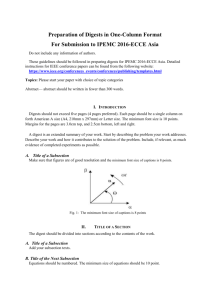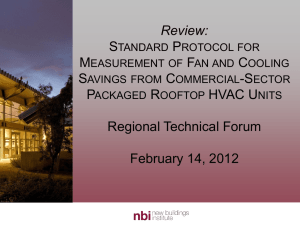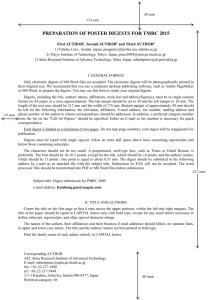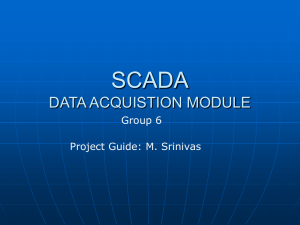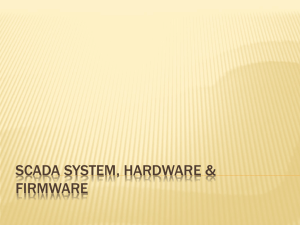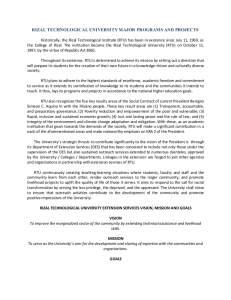template
advertisement
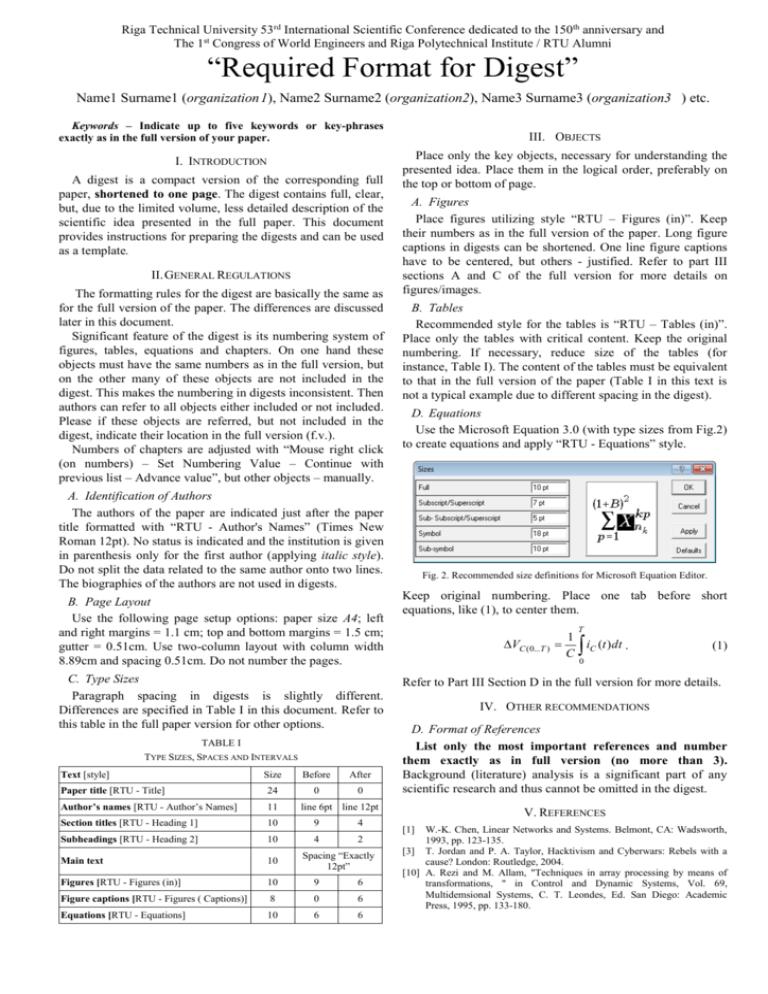
Riga Technical University 53rd International Scientific Conference dedicated to the 150th anniversary and The 1st Congress of World Engineers and Riga Polytechnical Institute / RTU Alumni “Required Format for Digest” Name1 Surname1 (organization 1), Name2 Surname2 (organization2), Name3 Surname3 (organization3 ) etc. Keywords – Indicate up to five keywords or key-phrases exactly as in the full version of your paper. I. INTRODUCTION A digest is a compact version of the corresponding full paper, shortened to one page. The digest contains full, clear, but, due to the limited volume, less detailed description of the scientific idea presented in the full paper. This document provides instructions for preparing the digests and can be used as a template. II. GENERAL REGULATIONS The formatting rules for the digest are basically the same as for the full version of the paper. The differences are discussed later in this document. Significant feature of the digest is its numbering system of figures, tables, equations and chapters. On one hand these objects must have the same numbers as in the full version, but on the other many of these objects are not included in the digest. This makes the numbering in digests inconsistent. Then authors can refer to all objects either included or not included. Please if these objects are referred, but not included in the digest, indicate their location in the full version (f.v.). Numbers of chapters are adjusted with “Mouse right click (on numbers) – Set Numbering Value – Continue with previous list – Advance value”, but other objects – manually. III. OBJECTS Place only the key objects, necessary for understanding the presented idea. Place them in the logical order, preferably on the top or bottom of page. A. Figures Place figures utilizing style “RTU – Figures (in)”. Keep their numbers as in the full version of the paper. Long figure captions in digests can be shortened. One line figure captions have to be centered, but others - justified. Refer to part III sections A and C of the full version for more details on figures/images. B. Tables Recommended style for the tables is “RTU – Tables (in)”. Place only the tables with critical content. Keep the original numbering. If necessary, reduce size of the tables (for instance, Table I). The content of the tables must be equivalent to that in the full version of the paper (Table I in this text is not a typical example due to different spacing in the digest). D. Equations Use the Microsoft Equation 3.0 (with type sizes from Fig.2) to create equations and apply “RTU - Equations” style. A. Identification of Authors The authors of the paper are indicated just after the paper title formatted with “RTU - Author's Names” (Times New Roman 12pt). No status is indicated and the institution is given in parenthesis only for the first author (applying italic style). Do not split the data related to the same author onto two lines. The biographies of the authors are not used in digests. B. Page Layout Use the following page setup options: paper size A4; left and right margins = 1.1 cm; top and bottom margins = 1.5 cm; gutter = 0.51cm. Use two-column layout with column width 8.89cm and spacing 0.51cm. Do not number the pages. C. Type Sizes Paragraph spacing in digests is slightly different. Differences are specified in Table I in this document. Refer to this table in the full paper version for other options. TABLE I TYPE SIZES, SPACES AND INTERVALS Text [style] Size Paper title [RTU - Title] 24 Author’s names [RTU - Author’s Names] 11 Section titles [RTU - Heading 1] 10 Subheadings [RTU - Heading 2] 10 Before After 0 0 Fig. 2. Recommended size definitions for Microsoft Equation Editor. Keep original numbering. Place one tab before short equations, like (1), to center them. T VC (0...T ) 4 4 2 Spacing “Exactly 12pt” Main text 10 Figures [RTU - Figures (in)] 10 9 6 Figure captions [RTU - Figures ( Captions)] 8 0 6 Equations [RTU - Equations] 10 6 6 (1) 0 Refer to Part III Section D in the full version for more details. IV. OTHER RECOMMENDATIONS D. Format of References List only the most important references and number them exactly as in full version (no more than 3). Background (literature) analysis is a significant part of any scientific research and thus cannot be omitted in the digest. line 6pt line 12pt 9 1 i (t ) dt . C C V. REFERENCES [1] W.-K. Chen, Linear Networks and Systems. Belmont, CA: Wadsworth, 1993, pp. 123-135. [3] T. Jordan and P. A. Taylor, Hacktivism and Cyberwars: Rebels with a cause? London: Routledge, 2004. [10] A. Rezi and M. Allam, "Techniques in array processing by means of transformations, " in Control and Dynamic Systems, Vol. 69, Multidemsional Systems, C. T. Leondes, Ed. San Diego: Academic Press, 1995, pp. 133-180.
